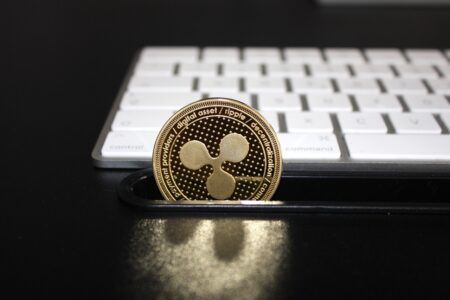Juan M. Villaverde, an econometrician and mathematician focused on developing various crypto index models at Weiss Cryptocurrency Ratings, has said that the digital assets industry is currently lacking “a robust and liquid derivatives market and trusted trading platforms that can create the liquidity.”
Villaverde, who has been studying cryptocurrencies since 2012, told CryptoGlobe that the crypto markets are “splintered and most of the major exchanges lack the reputation or commitment to transparency to drive major institutions to their platforms.” He added that “all of these things will come with time though, as the market matures.”
Distributed Ledger Technology Could Take “At Least Five Years To Mature”
When asked whether decentralized currencies will be traded in the same way or as seamlessly one day as traditional fiat-based assets, Villaverde remarked:
Absolutely. Although the tools needed are probably not developed yet. One of the keys for making trading of traditional assets seamless is centralization. Traditional exchanges are centralized and rely on traditional server-client infrastructure and a complex web of intermediaries to achieve their speed. For crypto assets, we’d love to see the same efficiency provided by robust distributed ledger technology which would make accessing these markets easier for everyone with an internet connection, no matter where they are based.
He continued: “The underlying protocols and technology need to evolve in order to make that a reality. I’d say we’re at least five years away from that, but second layer protocols like Bitcoin’s Lightning Network are key to getting us there. Distributed ledger technology (DLT) has the potential to drastically disrupt the way trading and finance works, but it is in its early stages.”
Villaverde further noted:
[DLT systems are also] arguably slower and more inefficient than legacy technology. The same was true in the early days of the internet, where the technology wasn’t robust enough even for making simple phone calls. But as the technology evolved, eventually all voice communication migrated over to internet platforms and completely replaced legacy technology. We’re going to see a similar technology arc with DLT.
Lines Between Crypto And Fiat To Become Blurry
In response to a question about whether multi-currency wallets, which allow users to transact in fiat and cryptocurrencies from the same (online) account, will be increasingly used in the future, Villaverde said:
Yes. The lines between “crypto” and “fiat” will only become more and more blurry as time goes on. Ideally, your wallet would let you hold any assets you want to own directly and seamlessly exchange them into any other assets you may require the moment you make a payment – all in the background and without the user being aware of it.
He went on to explain: “One of the simpler ways we’re seeing the fiat and crypto worlds merge is through stablecoins, which are crypto tokens that can be redeemed for real world assets – such as fiat money – at a later stage. This is how the industry has figured we can make traditional assets interoperable with crypto assets.”
“Buying Fractions Of A Property In Seconds, With The Press Of A Button”
When questioned about what he thinks are the main use cases for blockchain technology, Villaverde said:
In my view, this technology is most disruptive for the world of finance and trade. Everything from banking to trading to what products or assets are “tradeable” is going to be turned upside down by blockchain technology. The barriers for a business to issue their own stock will be torn down as the costs will be driven to almost zero.
He added:
[We will also see] lending platforms where borrowers meet sellers directly, virtual representations of a wide variety of real world assets (think art, real estate, precious metals, etc). How will the world of finance change thanks to distributed ledger technology? You’ll probably be able to sell call options on fractions of property you own from a place you’ve never visited halfway across the world … in seconds, and with the pressing of a button.
Villaverde clarified: “None of these concepts are new, but DLT makes them possible, whereas legacy infrastructure has geographic, technological, and legal barriers that prevent these applications from truly flourishing.”
Responding to a question about which cryptocurrencies he believes, except for Bitcoin (BTC), have the best chance of succeeding in the long-term, Villaverde stated: “Other than Bitcoin, Ethereum, XRP, and EOS are currently the ones we’ve identified as having the best combination of solid technology on the one hand, and a large enough user base on the other for us to be confident in their sustainability in the long term.”
He continued:
Others we’ve also identified thanks to their technological prowess are Cardano, Stellar, Holochain, and Hedera Hashgraph. In our view, it’s not just good technology that wins at the end of the day. You also need a critical mass of users engaging with your product to justify continuous development of its capabilities. As for what will drive the success of these technologies going forward, we can think of two applications: A platform that is excellent and processing and settling payments (Stellar and XRP come to mind) or a platform that excels at supporting dApps at a large scale (That’s where Ethereum, Cardano, Holochain, Hashgraph and EOS come in).
Going on to elaborate on Bitcoin’s main use case, Villaverde noted:
It’s interesting that you mention Bitcoin because that one is an odd case. Its main application is as a safe way to store value. A safe harbor to store capital in a time of political and/or economic turmoil. We don’t think any other cryptoasset has a chance of replacing Bitcoin in this area and the application is unique to it. That’s what makes Bitcoin so special, in our view.








